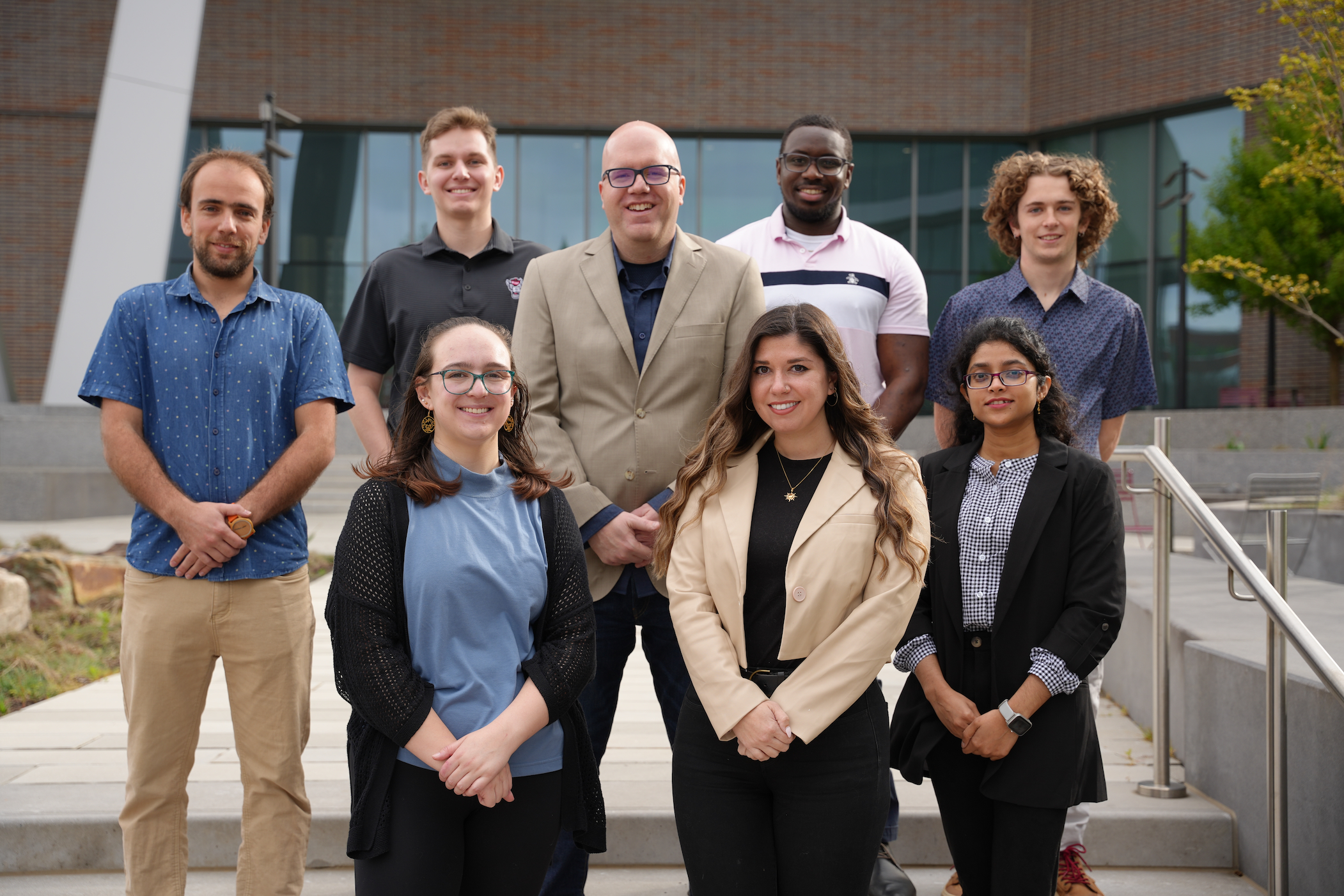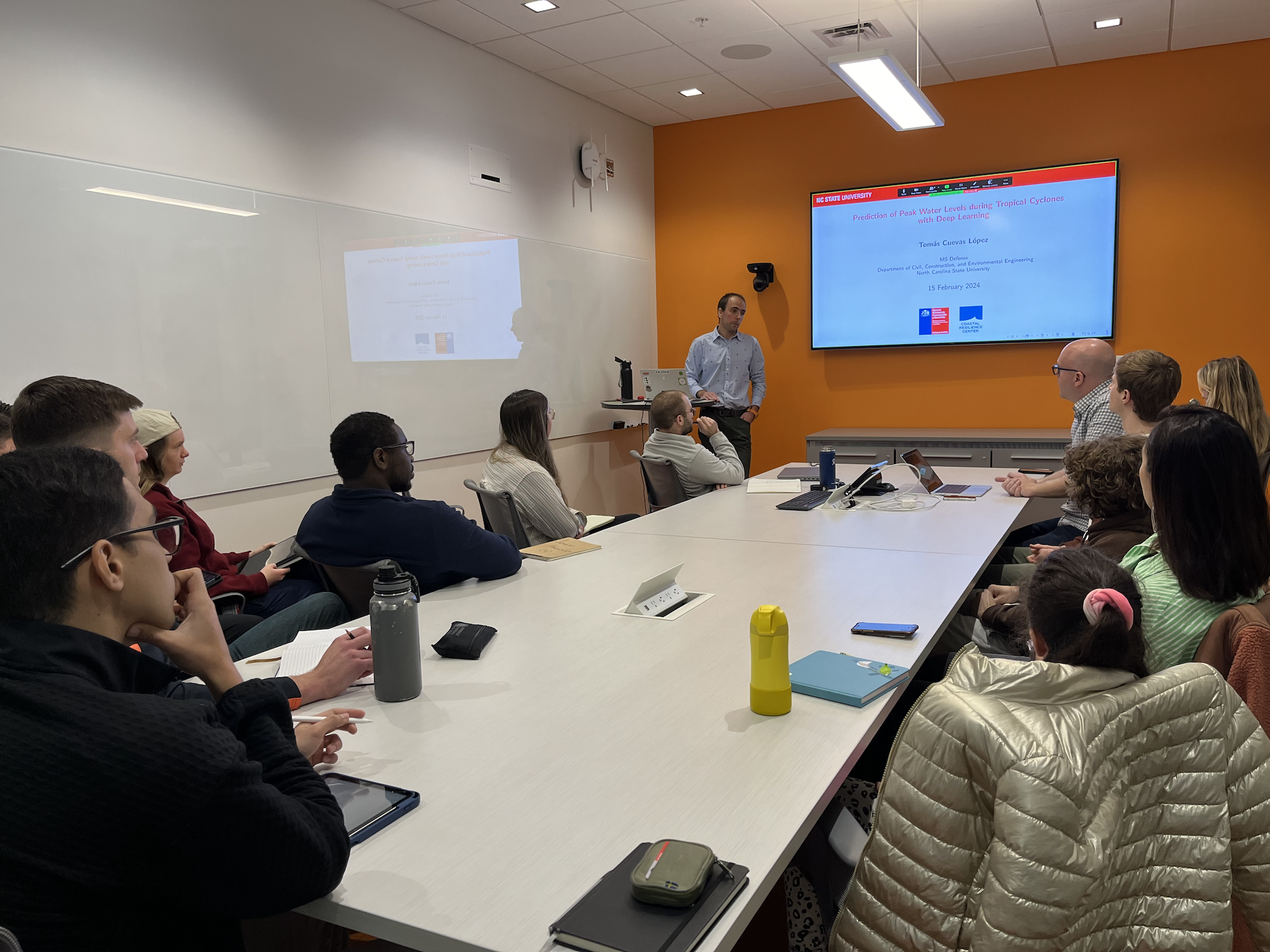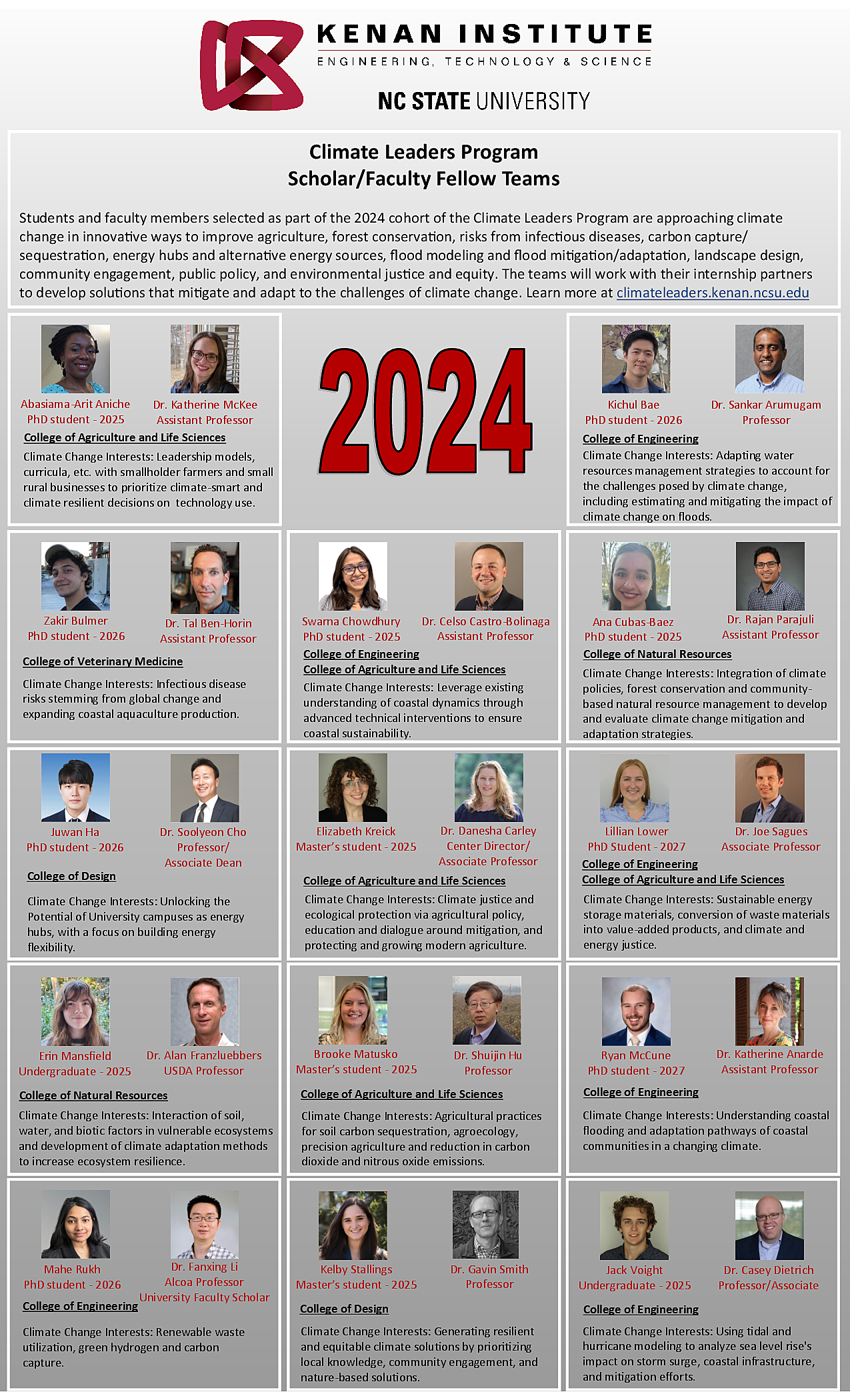In this web site, we share our research progress, from development to application, and from coding to publishing. Learn more about What We Do and how to Join Our Team.
Team Photo 2024

Front (left to right): Molly McKenna, Nicole Arrigo, Nahruma Pieu. Back (left to right): Tomás Cuevas López, Hunter Hudson, Casey Dietrich, Jenero Knowles, Jack Voight. Not pictured: Julia Antipova.
News: Oceans and Human Health Center
CCEE faculty to advance understanding of toxic algae blooms, protect human health as part of new NSF, NIEHS Center at NC State

Obenour will lead a project with Dietrich and Natalie Nelson (Department of Biological and Agricultural Engineering) focused on the development of models to predict the transport of cyanotoxins — toxins produced by cyanobacteria released in algae blooms — in coastal environments. The models will focus on coastal North Carolina, especially the estuaries and sounds where freshwaters mix with saline waters. With the models, researchers will evaluate where cyanotoxins may collect and where they may originate. They will also evaluate scenarios of future climate, such as how changes in temperature, river flows, and sea levels may affect the transport of cyanotoxin.
According to Obenour, “the research will protect public health by identifying cyanotoxin hotspots and by informing management actions to reduce cyanotoxin risks in the future.”
2024/02/28 – NCSU College of Sciences
NC State Receives $6.9 Million From NSF, NIEHS to Fund New Oceans and Human Health Center

NC C-CAPE will carry out three research projects. The goal of the first project is to understand the dynamics of harmful algal blooms and learn more about the presence and distribution of microcystin — a liver toxin — across the Pamlico-Albemarle Sound System, the country’s largest lagoonal estuary. They will then link spatiotemporal patterns to the contamination of seafood. The second project will define how microcystin mixtures influence mechanisms of liver toxicity in regulatory-relevant mammalian models and at-risk human populations. In the third project, researchers will work to predict microcystin distributions in water and seafood based on various environmental controls — and assess exposure risk in a changing climate. They will do so by integrating diverse data sets and coastal circulation modeling within a probabilistic modeling framework.
Tomás Cuevas López defends MS Thesis

Tomás starts his thesis defense.
Thesis Defense: Tomás Cuevas López
North Carolina Center for Coastal Algae, People, and Environment
A Schnetzer, SM Belcher, BB Cutts, DR Obenour, T Ben-Horin, JC Dietrich, C Hoyo, NG Nelson, R Paerl. “North Carolina Center for Coastal Algae, People, and Environment (NC C-CAPE).” National Institutes of Health, National Institute of Environmental Health Sciences, Centers for Oceans and Human Health 4: Impacts of Climate Change on Oceans and Great Lakes, 2024/02/01 to 2029/01/31, $6,913,382 (Dietrich: $467,482).
Jack selected for Climate Leaders Program
Congrats to Jack!

Enhancing Coastal Resilience through Participatory Transformation of Barrier Islands
JC Dietrich, EL Seekamp. “Enhancing Coastal Resilience through Participatory Transformation of Barrier Islands.” National Science Foundation, Directorate for Engineering, Division of Civil, Mechanical and Manufacturing Innovation, Disaster Resilience Research Grants, 2024/01/01 to 2026/12/31, $398,891 (Dietrich: $199,117).
Johnathan gets his Diploma
Johnathan is now a research oceanographer with the USGS in St. Petersburg, but he returned to NCSU for his graduation ceremony. It was great to see him again, hood him at the ceremony, and congratulate him. We are proud of Johnathan!

Johnathan accepts congratulations from Casey after being hooded with his PhD.

